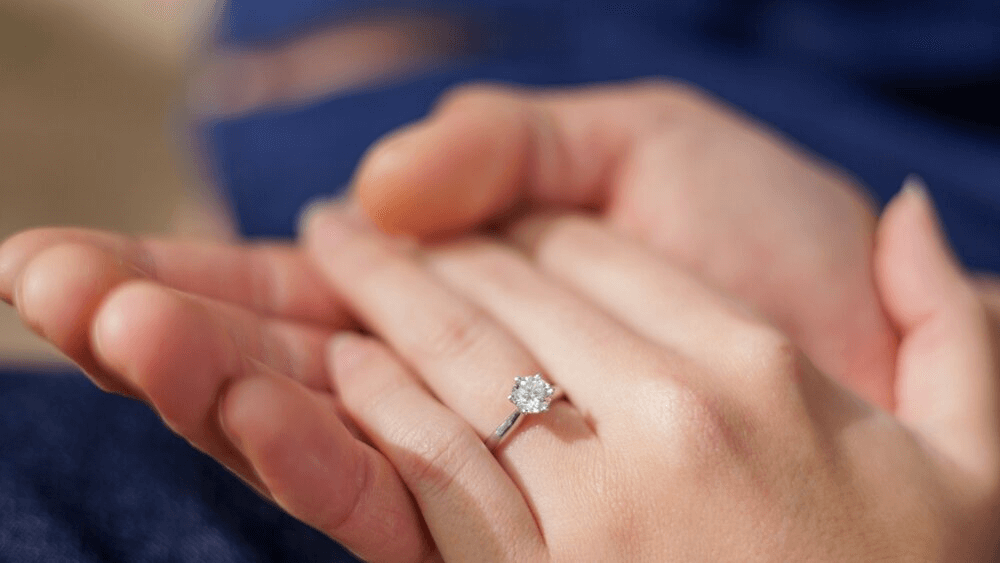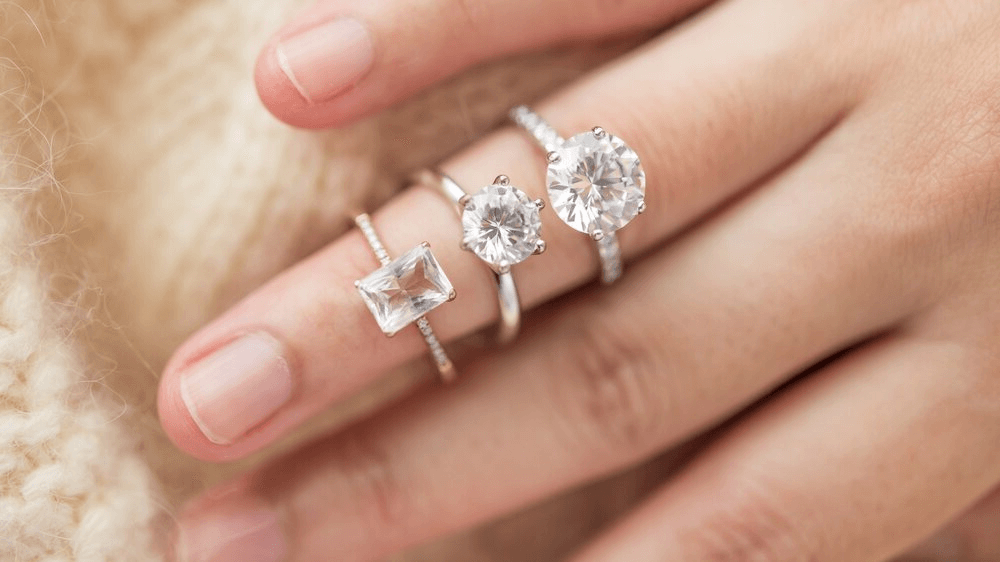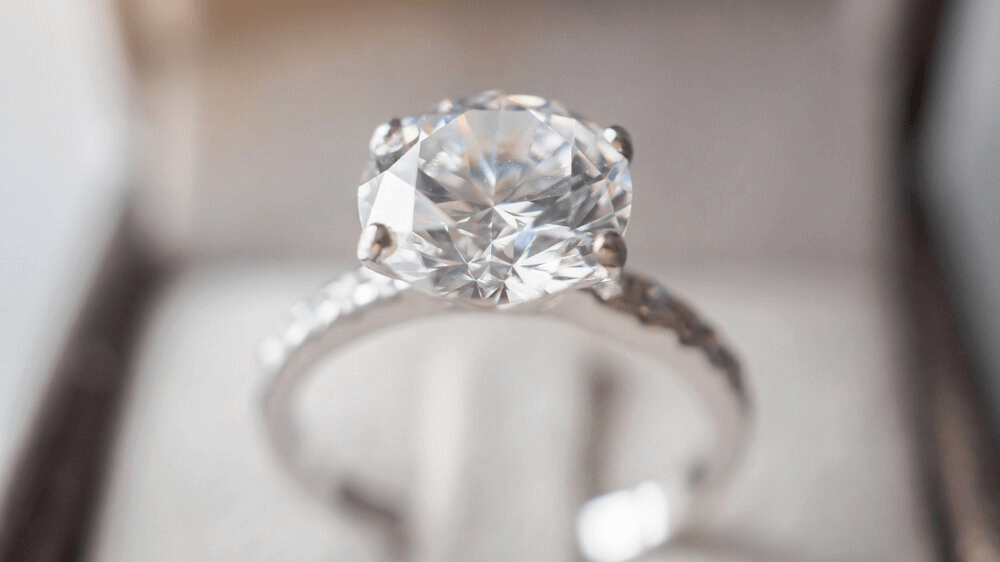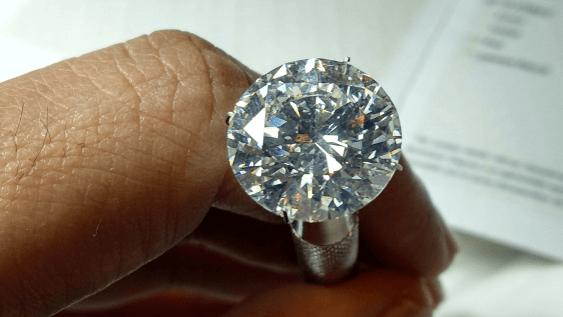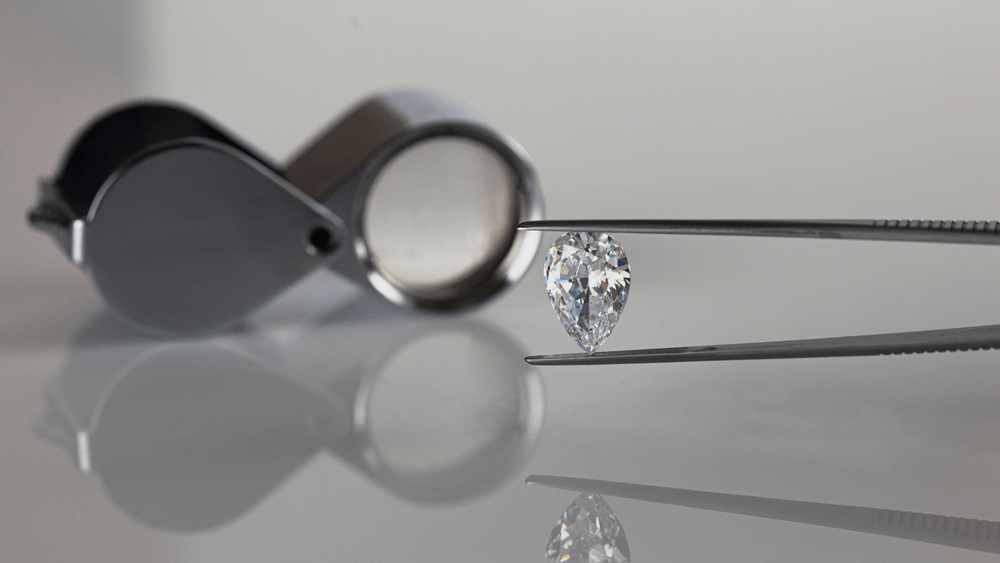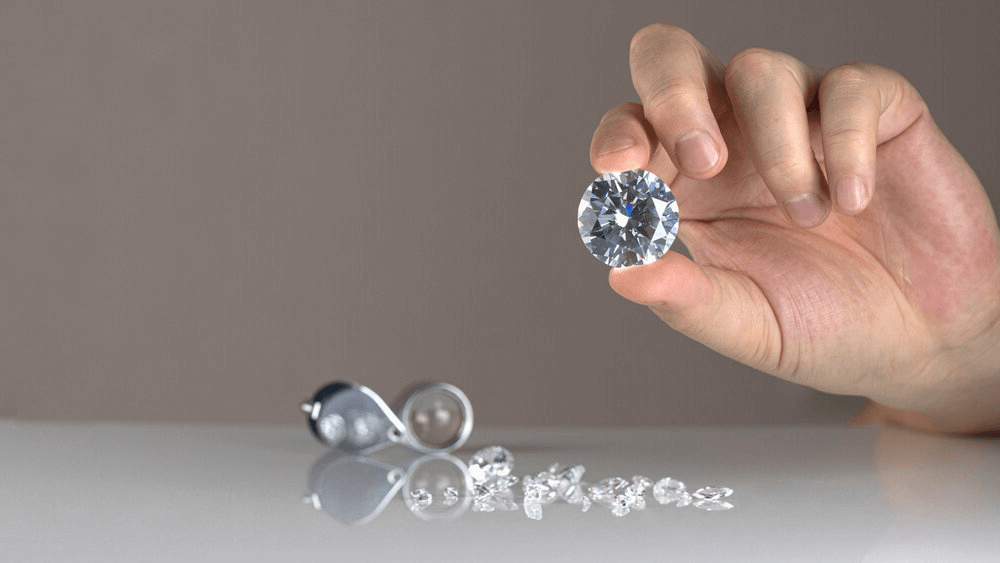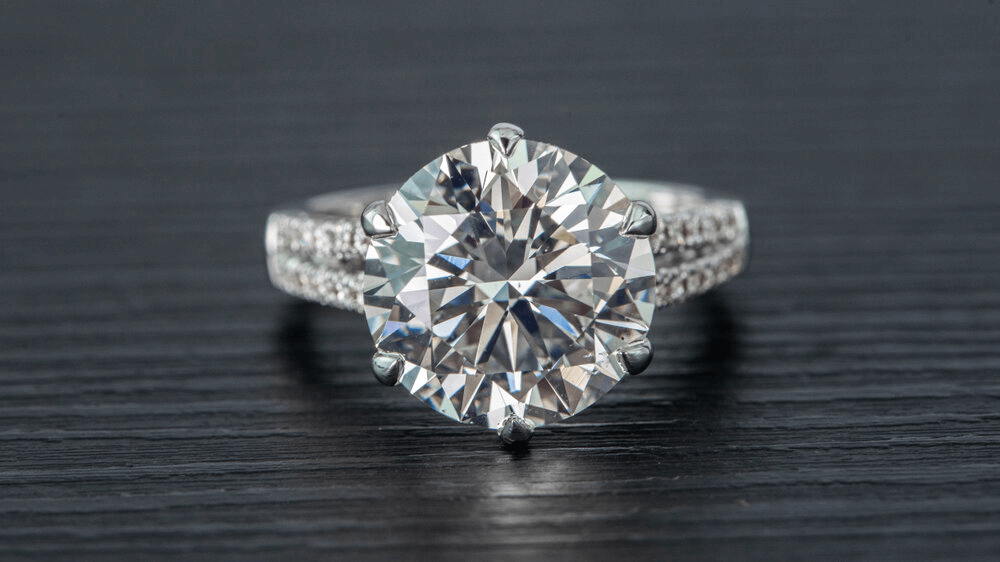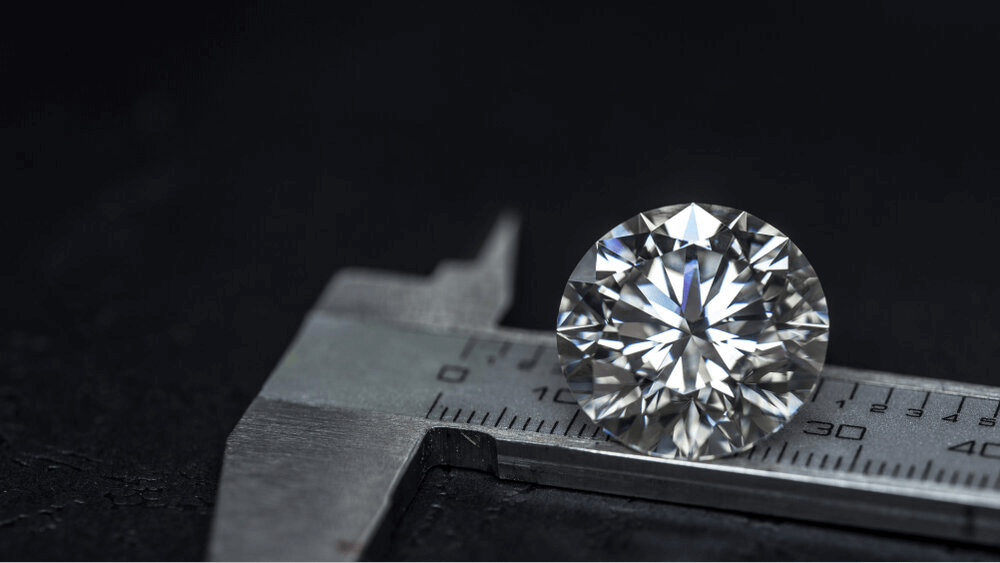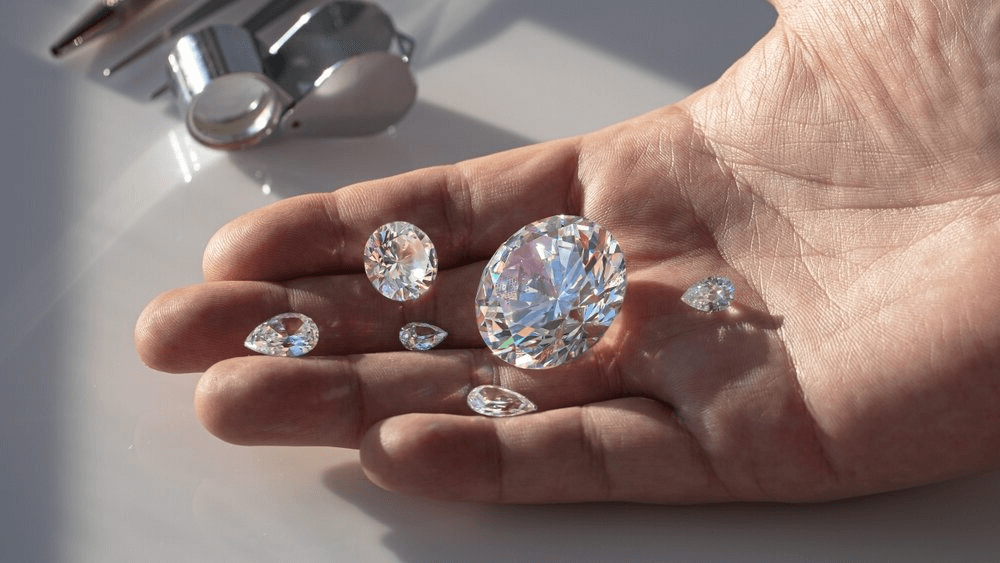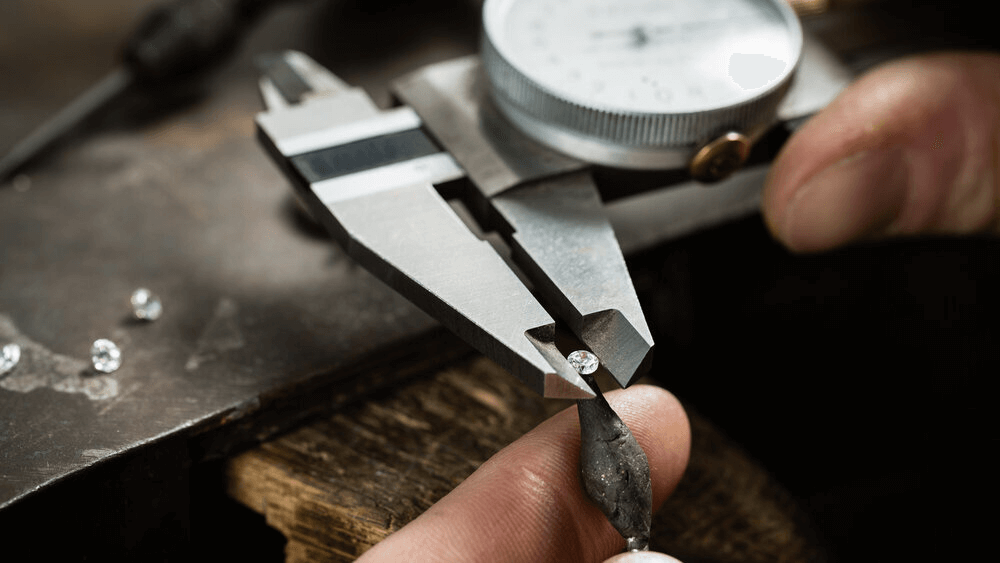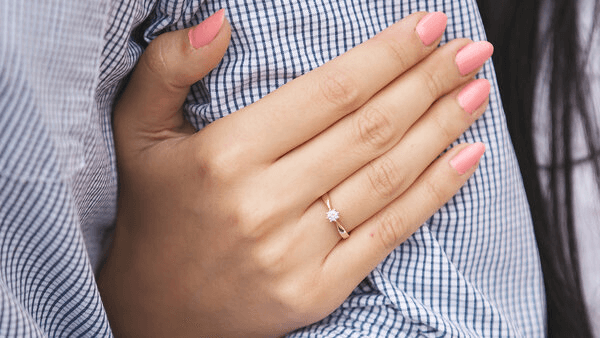How Much Does a 2.5 Carat Diamond Really Cost?

By Gary A.

Edited by Olivia H.
Published Oct 15, 2021
Edited on Dec 17, 2024
Looking to make a bold statement? A 2.5 carat diamond might just be the show-stopping choice you’ve been searching for—are you ready to turn heads with your engagement ring?

- 7 Quick Tips to Navigate the 2.5 Carat Diamond Engagement Rings Market
- Introduction
- Understanding Diamond Pricing
- Natural vs. Lab-Grown 2.5 Carat Diamonds
- Factors Influencing 2.5 Carat Diamond Prices
- Our Expert Take
- 7 FAQs
Before we dive deeper into the specifics, here are some practical tips to help guide your decision-making process:
7 Quick Tips to Navigate the 2.5 Carat Diamond Engagement Rings Market
- Tip 1: Understand the 4Cs: Cut, Color, Clarity, and Carat Cut: Opt for Excellent or Ideal cuts for maximum brilliance. Even with a 2.5 carat size, a poor cut can reduce sparkle. Color: Focus on Near Colorless grades (G, H, I) to balance beauty and budget. Remember, color nuances are subtler in certain shapes. Clarity: Aim for VS1 or VS2 clarity. These grades often offer eye-clean diamonds without the premium cost of higher clarity grades. Carat: A 2.5 carat diamond is a significant size. Its carat weight greatly influences price, so ensure the other Cs balance it out for value.
- Tip 2: Shape and Appearance Matter: Different shapes, like oval, cushion, or emerald, impact how large the diamond appears and its overall sparkle. Choose a shape that complements both the carat weight and the ring’s design.
- Tip 3: Pricing Transparency and Market Comparison: Research current market prices for 2.5 carat diamonds. Online platforms can offer competitive rates and more choices. Compare similar diamonds across different retailers to understand pricing trends.
- Tip 4: Setting Style Impacts Overall Look and Cost: The setting can either accentuate or overshadow your diamond. For a 2.5 carat size, a simpler setting might better highlight the diamond, whereas more intricate designs can add to the cost.
- Tip 5: Diamond Certification: A Must for Authenticity: Ensure your diamond comes with a certification from a reputable lab like GIA or AGS. This guarantees the diamond’s quality and characteristics as advertised.
- Tip 6: Be Wary of Hidden Flaws: Even with high clarity grades, some diamonds may have flaws positioned in noticeable spots. Inspect the diamond thoroughly or ask for detailed images if buying online.
- Tip 7: Consider the Long-Term Value: A 2.5 carat diamond is not just an immediate expense but an investment. Think about its long-term value, both in terms of financial worth and sentimental significance.
Now that you’ve got these practical tips, use Jeweler AI below to find the perfect engagement ring that suits your style and budget:
Introduction
It’s not hard to make a statement with a diamond. Large or small, a beautifully cut and polished stone will claim its fair share of eyes across even the most crowded of rooms.
Of course, it’s even easier to make a statement with an imposing 2.5 carat diamond, which pretty much demands the undivided attention of all present.
The Appeal of 2.5 Carat Diamonds
Well above the ‘average weight’ of 1 carat for diamond engagement rings across the US, and large enough to generate truly magnificent levels of fire and brilliance, 2.5 carats is a great place to look if you want to make a strong impression.
Whether you’re favoring a bold diamond solitaire, or the scintillating glitter of a halo, a diamond of this size will give you plenty of options in terms of design – and no shortage of sparkle.
But, just how much is a taste for 2.5 carats going to set you back?
Understanding Diamond Pricing
The 2.5 carat diamond is heavier than the average diamond used in an engagement ring, which means the price will be higher. A 2.5 carat Round Brilliant diamond will measure just shy of 9mm in diameter – around 8.99.
2.5 carats is the equivalent of 0.5 grams or 500 milligrams. While this may not sound particularly heavy, it’s still way above the average for engagement rings. For instance, a Round Brilliant 1 carat diamond will typically measure approximately 6.5mm in diameter, which means a (very noticeable) difference of almost 2.5mm between the two stones.
You will, of course, have to pay a premium for those extra millimeters (more on that below) but, if you’re able to compare these two weights side-by-side in person, you’ll be able to see quite how much more of an impact the 2.5 carat diamond can make.
Natural vs. Lab-Grown 2.5 Carat Diamonds
Choosing between a natural and a lab-grown 2.5 carat diamond involves weighing tradition against innovation.
Natural diamonds, formed over millions of years in the Earth, are valued for their rarity and timeless appeal. They often come with a higher price tag, reflecting their investment potential and the romantic story behind their formation.
In contrast, lab-grown diamonds are created in controlled settings, offering the same beauty and characteristics as natural diamonds but typically at 80% to 90% lower costs. They appeal to budget-conscious buyers and those concerned about environmental impact.
Ultimately, your choice will reflect your personal values and preferences, whether you lean towards the allure of natural diamonds or the accessibility of lab-grown options.
Here’s a table displaying the average prices of 2.5 carat diamonds in both natural and lab-grown options:
| Carat | Shape | Color | Clarity | Natural Price | Lab-Grown Price |
|---|---|---|---|---|---|
| 2.5 | Round | F | VS2 | $37,000 | $3,650 |
| 2.5 | Pear | F | VS2 | $33,100 | $3,800 |
As shown in the table, there is a significant price difference between natural and lab-grown 2.5 carat diamonds. For instance, a natural round diamond with F color and VS2 clarity costs approximately $37,000, whereas its lab-grown counterpart is priced around $3,650. Similarly, a natural pear-shaped diamond of the same quality is about $33,100, while the lab-grown version is $3,800. This stark contrast highlights the affordability of lab-grown diamonds vs. the value of natural diamonds.
Factors Influencing 2.5 Carat Diamond Prices
Many 2.5 carat diamonds will be priced above $20,000, although exceedingly high quality diamonds could cost over $70,000. The average sits just above $31,000.
If you’ve jumped to the 2.5 carat weight from one of our articles on 1 or 1.5 carat diamonds, then you’ve no doubt already noticed quite how much difference sits between these different – and relatively close – carat weights. After all, a high quality 1 carat diamond will, for the most part, fall below the $10,000 mark – so why is 2.5 so much pricier?
The short answer is this: appeal. We’ve mentioned already that the average diamond weight for engagement rings sits around one carat – a fact which gives 1 carat diamonds a price jump of their own – and this means that noticeably larger diamonds (starting from around 1.5 carats and up) are growing increasingly coveted.
Whether for status or beauty, larger diamonds are highly sought-after. And, while the prestige of having the biggest diamond ring isn’t necessarily a motivating factor for those looking at 2.5 carat diamonds, it’s certainly enough to cause an exponential price increase as carat weight rises.
What does this mean? It means that, rather than a 2.5 carat diamond’s price being double that of a 1.25 carat diamond, the larger stone will be worth thousands – if not tens of thousands – of dollars more.

The Cut: A Key to Brilliance
A 2 carat diamond will be big enough to draw attention, but the cut can make it look even bigger.
From Keira Knightley to Mila Kunis, plenty of celebrities have set a strong example for diamonds that sit comfortably above the 2 mark, but shy of the more ‘out there’ 3 carats. This is a size that offers plenty of versatility – it’ll look stunning in a more minimalistic solitaire setting, but it’ll also look great in a more elaborate setting without looking like ‘too much’.
The cut is the key to brilliance here, as some shapes will look bigger than others. The elongated Marquise, Oval and Pear cuts – and even the Emerald – will seem to dominate the finger more than some of the deeper shapes, like the Cushion.
Nevertheless, a 2 carat diamond will not disappoint – or feel lost among your future bride’s other jewelry.
Clarity and Color: Striking a Balance
When it comes to diamonds, the phrase ‘you get what you pay for’ rings true. Knowing what you need, however, and what you can sacrifice is the key to getting the best price possible for your ring – something that matters all the more when you’re considering these highly coveted carat weights.
Since your 2.5 carat diamond ring cost will, for the most part, be dictated by the price of your diamond (which will account for around 85% of your spend), it’s important to get to grips with this part first. To do that, you need to cut a balance between clarity and color.

Navigating Clarity and Color Grades
When it comes to clarity, the GIA grade of VS1 or VS2 will typically yield a strong choice of eye clean diamonds, though it depends on the shape.
As we mentioned above, a larger diamond means fewer opportunities for eye cleanliness – but it’s no less important in a 2.5 carat diamond than it is in one measuring 1 carat.
The higher clarity grades, like VVS1 and VVS2, guarantee that your diamond will be eye clean, but they will come at a premium cost – one that really isn’t worth paying for when you can find equally beautiful diamonds at the VS1 and VS2 mark. When the difference could be worth thousands of dollars, it’s clear which one we’d go for.
Some diamond shapes, such as the Emerald, are less forgiving than others. The facet patterns found in the modified brilliant shapes, like the Oval, Pear and Marquise, are better at concealing slight inclusions than the longer, wider facets of the step cuts.
When it comes to color, the GIA’s ‘Near Colorless’ grades G, H, and I will offer some strong options at a more affordable price than the Colorless grades (D, E, and F).
Again, this does depend on the shape. The Cushion, for instance, tends to ‘hold’ onto color more than, say, the Round Brilliant, meaning that you’ll want to aim for the higher ‘Near Colorless’ grades.
Again, however, this is your opportunity to bring down your 2.5 carat diamond ring price by hundreds of dollars – if not more. The highest color grades are, of course, the best – but, by aiming your sights a little lower, you can easily find something beautiful and visually clear for a lower price.
Our Expert Take
An engagement ring featuring a 2.5 carat diamond could cost anywhere from $20,000+, although exceedingly high quality diamonds could drive the overall price of the ring up to $70,000+.
There is no denying that a 2.5 carat diamond makes for a stunning engagement ring – nor that a diamond of this magnitude comes at a premium price for those who feel drawn to it.
The best way to save money on your 2.5 carat diamond ring’s price is to prioritize cut over clarity and color – while never sacrificing eye cleanliness. While it might not sound like a lot, opting for a clarity grade of VS2 over VVS1, for instance, will save thousands of dollars, and make the cost of your ring that bit more manageable.
You can take a look at a wide selection of GIA graded diamonds between 2.4 and 2.99 carats, then head over to our online store to start getting things in motion…
7 FAQs
- Q: How Much Should I Expect to Pay for a 2.5 Carat Diamond Ring?
- A: The cost of a 2.5 carat diamond ring can range significantly, from about $20,000 to over $70,000, depending on factors like cut, color, clarity, and the setting style.
- Q: Is a 2.5 Carat Diamond Considered Large for an Engagement Ring?
- A: Yes, a 2.5 carat diamond is considered quite large for an engagement ring, significantly larger than the average size of around 1 carat.
- Q: What is the Best Shape for a 2.5 Carat Diamond?
- A: The best shape is subjective and depends on personal preference. Popular choices include round for maximum brilliance, oval or pear for an elongated look, and cushion or emerald for unique appeal.
- Q: How Can I Ensure I’m Getting a Good Quality 2.5 Carat Diamond?
- A: Always look for diamonds with a certification from reputable labs like GIA or AGS, and pay close attention to the 4Cs – cut, color, clarity, and carat.
- Q: Are There Visible Differences in Color Grades at 2.5 Carats?
- A: Yes, color differences can be more noticeable in larger diamonds like 2.5 carats. However, near-colorless grades (G, H, I) often appear colorless to the naked eye and offer better value.
- Q: What is the Ideal Setting for a 2.5 Carat Diamond Ring?
- A: Solitaire settings are classic and highlight the diamond’s size and brilliance. However, halo or pavé settings can add extra sparkle and make the diamond appear even larger.
- Q: How Do Lab-Grown Diamonds Compare in Price for 2.5 Carats?
- A: Lab-grown diamonds are typically more affordable than natural diamonds. A 2.5 carat lab-grown diamond could cost 80%-90% less than its natural counterpart while offering similar visual characteristics.
Step into the world of Jeweler AI and discover the perfect 2.5 carat diamond ring. Experience personalized, expert sorting tailored to your unique preferences!
Here are more specific diamond prices topics to browse:
- Melee Diamonds: The Perfect Accents to Enhance the Center Stone
- Small Diamond Engagement Rings: Big Sparkle Comes In Little Packages
- 0.25 Carat Diamond: Tiny Treasure or Just Too Small?
- The True Value of a 0.5 Carat Diamond Ring Revealed
- 0.7, 0.8, 0.9 Carat Diamond Showdown: Which One Wins?
- Price Alert: Don’t Overpay for a 1 Carat Diamond Ring!
- What You Should Pay for a 1.5 Carat Diamond Ring?
- Price Alert: How Much Should You Pay for a 2 Carat Diamond Ring?
- The Real Cost of a 3 Carat Diamond Ring
- Industry Secret: How Much Does a 4-Carat Diamond Ring Actually Cost?
- How Much is Too Much? The True Cost of 5 Carat Diamond Ring!
- 6 Carat Diamond Rings: Pricing Breakdown & Value Tips
- 7 Carat Diamond Rings: Affordable Luxury Prices Revealed
- 8 Carat Diamond Rings: Price Comparison & Savings Tips
- 9 Carat Diamond Rings: Detailed Pricing Guide & Best Deals
- 10-13 Carat Diamonds: The Ultimate Symbol of Luxury!
- 15 Carat Diamonds: Why Celebrities Love Them!
- Unveiling the Majesty: The Secrets Behind the 20 Carat Diamond Ring!
- Decoding the Grandeur: The Journey to Choosing a 25 Carat Diamond Ring
- Average Carat Size for Rings: What’s the Ideal?
- Understanding What Is CTTW Diamond In Engagement Ring
- The Truth About Why Diamonds Are So Expensive and Incredibly Valuable
FOLLOW-UP GUIDE SERIES

